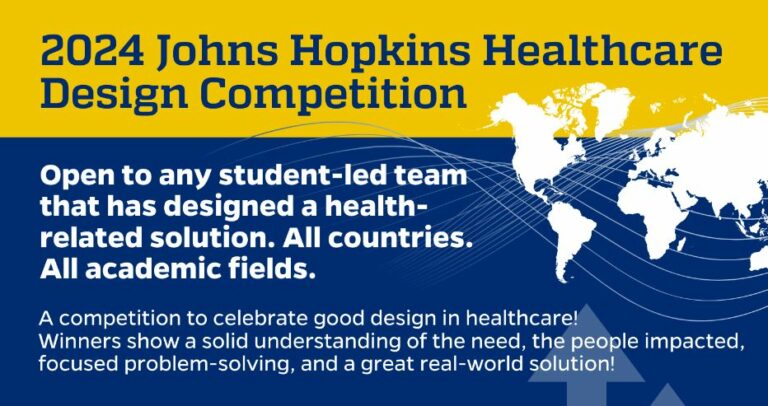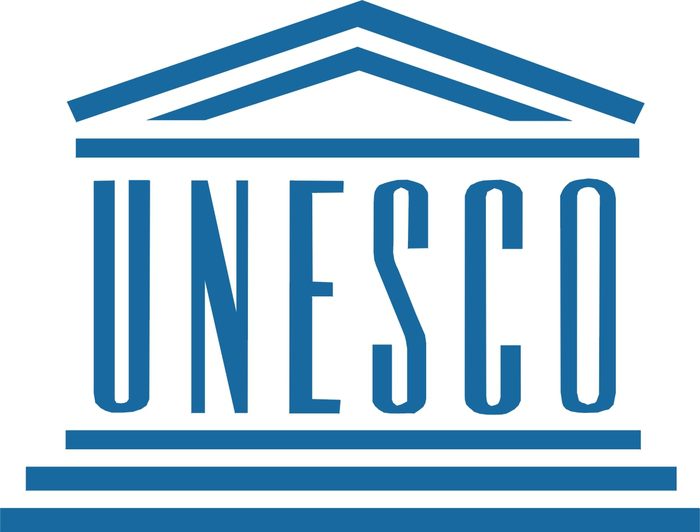2024 Johns Hopkins Healthcare Design Competition
The Johns Hopkins Healthcare Design Competition is open to any student-led team that has designed a healthcare related solution nationwide. The competition is to celebrate good design in health care, winners show a solid understanding of the need, the people impacted, focused problem-solving and a great real-world solution.
- Designs of Solutions for Advanced Health Systems
- Global Health/ Humanitarian Design
- Healthcare Apps/ Digital Health
- Post-Surgical Infection Management
The timeline for the application processes are stated below:
- February 12 – Submission of two-page proposals
- March 18 – Finalists informed
- April 13 – Final round (virtual event)
Eligibility Criteria:
- Project must be focused on a healthcare application in either of the 4 tracks
- Designs of Solutions for Advanced Health Systems
- Global Health/ Humanitarian Design
- Healthcare Apps/ Digital Health
- Post-Surgical Infection Management
- Project must have been started after January 1st, 2022
- Project must be driven by full-time students
- Postdoc research projects are ineligible.
- Projects that have utilized significant funding (>$100K) are ineligible.
- Projects that are not run by full-time students are ineligible. For example, projects run by startup companies or faculty are ineligible.
- Eligible full-time students include those working towards undergraduate, masters, doctoral, and professional degrees (MBA, MD, etc.).
- Project teams should comprise of more than one full-time student.
- Applicants can submit multiple unique projects
Benefits:
- 1st prize: $5,000
- 2nd prize: $3,000
- 3rd prize: $1,000
Required Documents
The Design Brief is a two-page executive summary of your design project. The brief should be written for an audience of medtech engineers and designers who may not be as familiar as you are with your clinical and solution space.
Content
Design Briefs will be evaluated by following four criteria. We recommend the design brief is laid out in sections devoted to each criteria.
- Problem description (25%)
- Define the problem you are addressing, the clinical/healthcare background, and why there is a need for a better solution.
- Solution concept(s) (25%)
- Present your proposed solution with your design rationale and explain how it meets the needs of the stakeholders involved in your clinical/healthcare problem.
- Reduction to practice (25%)
- Describe the proof-of-concept experimental results you have completed and/or renderings and photos of your prototype(s).
- Pathway to implementation (25%)
- Describe the pathway that lies ahead for your project towards creating an impactful solution.
Format
The Design Brief must be no more than 2 pages in length including figures. References can be listed as a separate page.
- Use an Arial, Helvetica, Palatino Linotype, or Georgia typeface, a black font color, and a font size of 11 points or larger. (A Symbol font may be used to insert Greek letters or special characters; the font size requirement still applies.)
- Type density, including characters and spaces, must be no more than 15 characters per inch. Type may be no more than six lines per inch. Use standard paper size (8 ½” x 11). Use at least one-half inch margins (top, bottom, left, and right) for all pages. No information should appear in the margins.
- Figures, plots, and/or photos are highly recommended but are counted towards the page limit.
- References can be included in a separate page and are not part of the two-page requirement
How to Apply?





